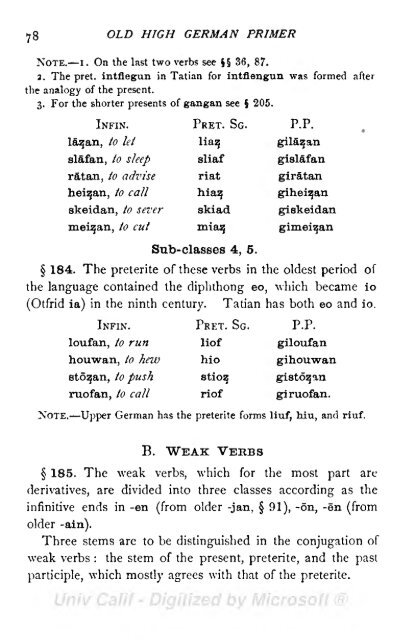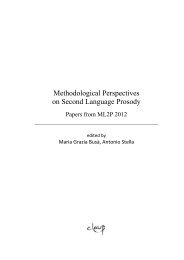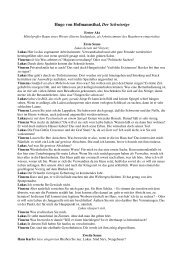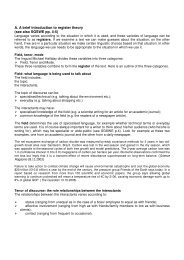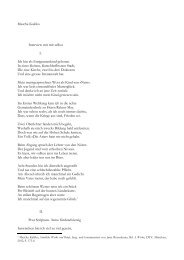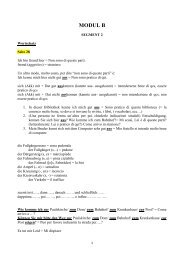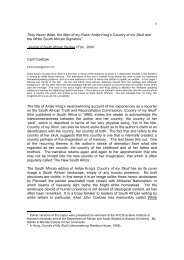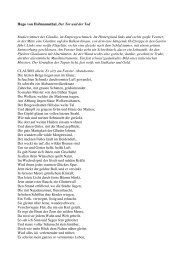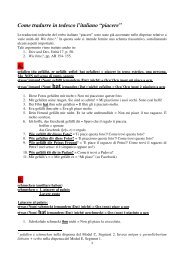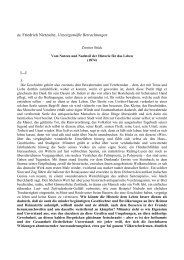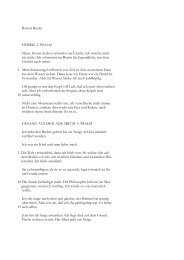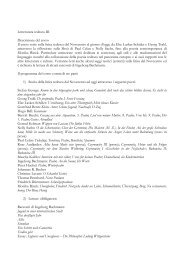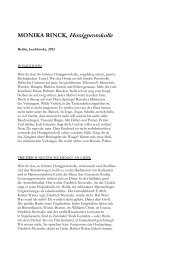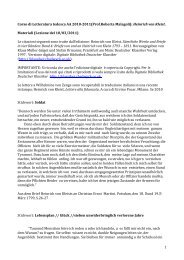You also want an ePaper? Increase the reach of your titles
YUMPU automatically turns print PDFs into web optimized ePapers that Google loves.
jS<br />
OLD HIGH GERMAN PRIMER<br />
NOTE. i. On the last two verbs see J 36, 87.<br />
2. The pret. intfiegun in Tatian for intfiengun was formed after<br />
the analogy of the present.<br />
3. For the shorter presents of gangan see 205.<br />
INFIN. PRET. So. P.P.<br />
laz,an, to let lia^ gila^an<br />
slafan, to sleep sliaf gislafan<br />
ratan, to advise riat giratan<br />
heizan, to call hiaz giheizan<br />
skeidan, to sever skiad giskeidan<br />
meiz,an, to cut miaz, gimei^an<br />
Sub-classes 4, 5.<br />
184. The preterite of these verbs in the <strong>ol</strong>dest period of<br />
the language contained the diphthong eo,<br />
(Otfrid ia) in the ninth century.<br />
NOTE.<br />
which became io<br />
Tatian has both eo and io.<br />
INFIN. PRET. SG. P.P.<br />
loufan, io run liof giloufan<br />
houwan, to hew hio gihouwan<br />
stozan, to push stioz gistdzan<br />
ruofan, to call riof giruofan.<br />
Upper German has the preterite forms liuf, hiu,<br />
B. WEAK VEBBS<br />
and riuf.<br />
185. The weak verbs, which for the most part are<br />
derivatives, are divided into three classes according<br />
as the<br />
infinitive ends in -en (from <strong>ol</strong>der -jan, 91), -on, -en (from<br />
<strong>ol</strong>der -ain).<br />
Three stems are to be distinguished in the conjugation of<br />
weak verbs : the stem of the present, preterite, and the past<br />
participle, which mostly agrees with that of the preterite.


